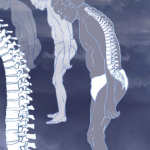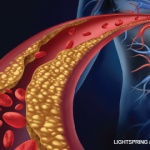NEW YORK (Reuters Health)—Nonsteroidal anti-inflammatory drugs (NSAIDs) are effective, but underused, in patients with early axial spondyloarthritis, researchers from France report.
NSAIDs are the cornerstone of treatment of axial spondyloarthritis, but there is often a trade-off between prescribing doses high enough to decrease pain and other symptoms vs. keeping the doses low enough to decrease the likelihood of adverse events.
Dr. Anna Molto from Pitie-Salpetriere Hospital in Paris and colleagues analyzed the use of NSAIDs by 627 patients who participated in DESIR, a multi-center study of patients with early inflammatory back pain of less than three years’ duration suggestive of axial spondyloarthritis.
At inclusion, 92.8% of patients had received any NSAID treatment in the prior six months. By 18 months after enrollment, this proportion had decreased to 70.2% and did not differ according to the fulfillment of the Assessment of SpondyloArthritis International Society (ASAS) criteria.
At enrollment, 15.5% of patients were in the “very low dose” NSAID category and 13% were in the “very high dose” NSAID category. By three years into the study, 45.5% of all patients were taking very low doses and 9% continued to take very high doses.
Median NSAID doses were much higher for patients with Bath Ankylosing Spondylitis Disease Activity Index (BASDAI) scores above 20 than for patients with BASDAI scores below 20, according to the May 26 Joint Bone Spine online report.
Mean BASDAI scores were 44.3 at inclusion, but remained at symptomatic levels (33.8) three years later.
Patients taking very low doses of NSAIDs were significantly more likely than other patients to have the absence of a good NSAID response at baseline and a history of inflammatory bowel disease.
“NSAID intake was in general very low and decreased over time, even though symptoms remained present, which suggests patients with early axial spondyloarthritis may not be receiving NSAIDs as recommended by the expert societies,” the researchers note.
“NSAID prescription in early axial spondyloarthritis is frequent, but intakes are low, and appear to correspond to an ‘on demand’ pattern,” they conclude. “Future studies focusing on the outcome of the different patterns of prescription (high vs. low, continuous vs. on demand) are needed, with an especial attention to safety and radiographic progression associated with such patterns.”
Dr. Molto was not available for comments.
The French Society of Rheumatology supported this research. The authors made no disclosures.


